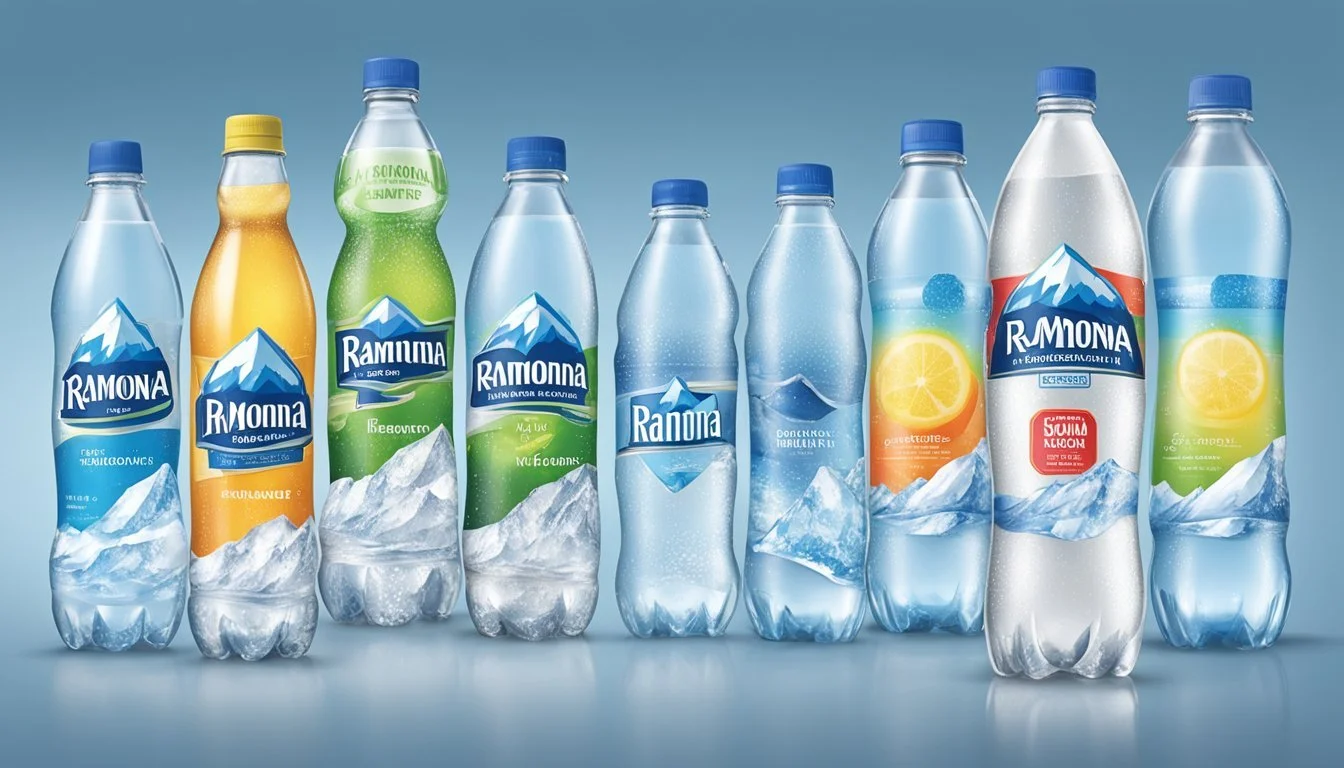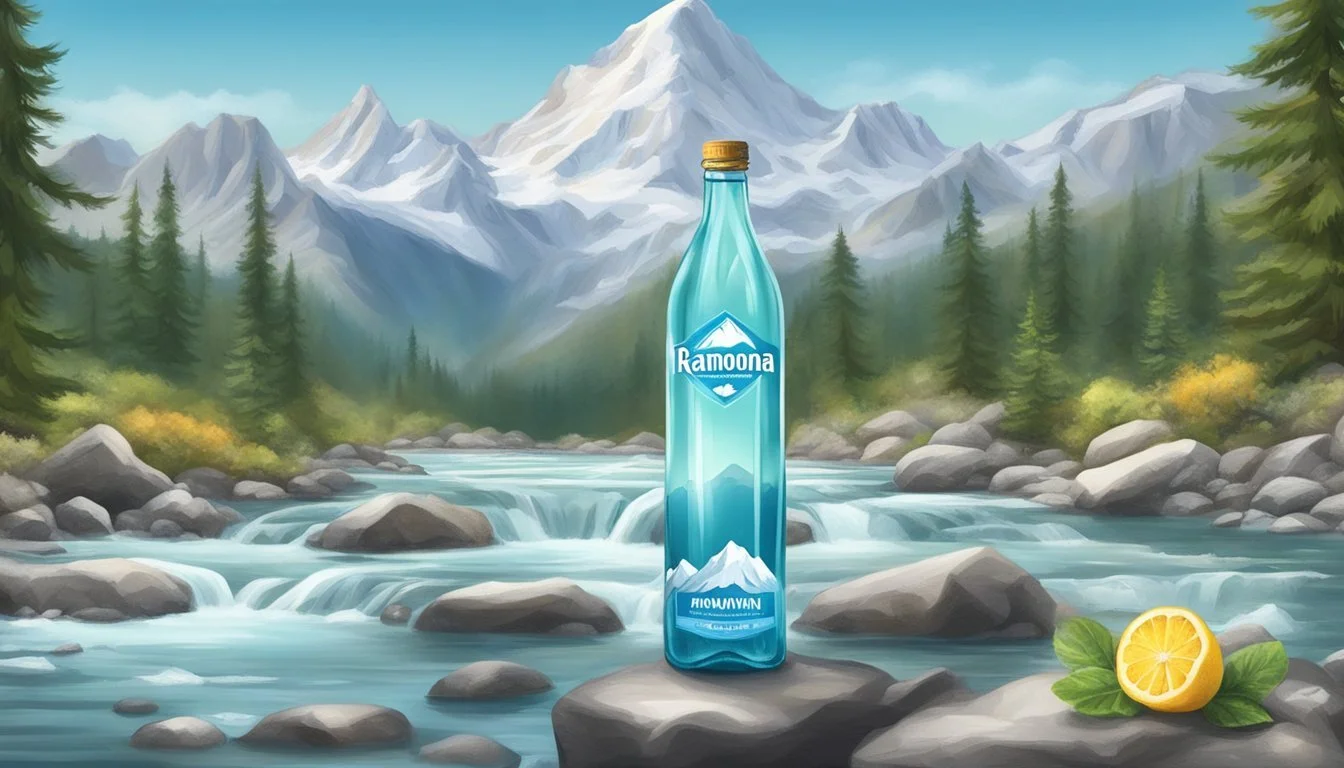Ice Mountain vs. Ramona
Which Bottled Water is Better? A Detailed Comparison
Ice Mountain and Ramona are two bottled water brands that have garnered quite a following. For those who are particular about their hydration, choosing between these two can be challenging. Ice Mountain, known for its crisp and refreshing taste, is sourced from natural springs in Michigan. Many consumers appreciate its consistent quality and smooth finish, making it a reliable choice for daily consumption.
Ramona, on the other hand, offers a distinct flavor profile by capturing water from the pristine sources of Italy. Some users find its taste to have subtle mineral undertones, which adds to its unique appeal. While both brands boast of purity and quality, a taste test reveals that personal preference plays a huge role in determining the better option.
For a detailed comparison between the two, examining factors such as source, flavor, and consumer feedback will provide a clearer picture. Whether you prefer the clean, reliable taste of Ice Mountain or the distinctive, mineral-rich flavor of Ramona, both are excellent choices that cater to different preferences.
Brand Overview
Both Ice Mountain and Ramona offer bottled water products with distinct histories and unique qualities. Exploring the origins and development of these brands reveals how they have positioned themselves in the market.
Ice Mountain Brand History
Ice Mountain, a water brand under the Nestlé Waters North America portfolio, sources its water from springs in Michigan. The brand was established to meet the growing demand for natural spring water, and it quickly gained popularity in the Midwest.
The brand prides itself on its multi-step filtration process, which ensures the purity and quality of its water. This includes initial screening and removal of large particles, making the water suitable for consumption. Ice Mountain is known for its crisp taste and reliable quality, features which by many consumers have come to appreciate.
Ramona Company Evolution
Ramona, a lesser-known water brand, started out as a small family-operated business. It quickly expanded due to an increasing demand for bottled water with a unique local character. Sourcing its water from spring locations in California, Ramona emphasizes sustainability and eco-friendliness in its operations.
Unlike larger brands, Ramona utilizes environmentally friendly packaging, opting for biodegradable and recyclable materials. The company has also invested in renewable energy sources to power its operations. This focus on sustainability has garnered Ramona a loyal customer base that values environmentally conscious products.
By combining a commitment to quality and sustainability, Ramona continues to evolve and respond to market trends, maintaining a niche presence in the competitive bottled water industry.
Water Source and Quality
Ice Mountain and Ramona offer differing sources and types of water, each impacting their overall quality. This section examines the origins of both brands' water and compares their attributes in detail to provide a thorough understanding for consumers.
Examining Ice Mountain's Source
Ice Mountain Natural Spring Water is sourced from multiple springs located in the Midwest. These springs are carefully selected to ensure a consistent supply of clean drinking water.
The water flows naturally to the surface, which helps maintain its mineral content. Ice Mountain employs a multi-step filtration process. Initially, large particles are screened out, followed by additional purification to remove smaller impurities. This ensures high water quality while retaining essential minerals.
The source's natural attributes are a key selling point. The regional location provides distinctive mineral compositions contributing to its taste. This process and geographical sourcing help Ice Mountain maintain a reputable standard in the bottled water industry.
Understanding Ramona's Water Origin
Ramona sources its water from municipal sources, which are processed to ensure safety and cleanliness. Unlike spring water, municipal water is typically treated to remove contaminants and may involve processes such as chlorination and filtration.
Being reliant on municipal systems, Ramona's water quality can vary depending on the local supply's condition. The brand emphasizes rigorous testing and additional purification to maintain high standards.
Nonetheless, it lacks the natural mineral content found in spring water. Consumers who prefer a more organic water experience might find this a drawback. However, the standardized treatment guarantees that Ramona provides safe and reliable drinking water.
Water Source Comparison
When comparing Ice Mountain and Ramona, the distinction lies primarily in their origins: natural springs versus municipal sources. Ice Mountain's natural spring water inherently retains minerals that contribute to its unique flavor and quality, making it favorable among those who appreciate natural spring water.
Ramona, sourcing from municipal water, ensures reliability and safety through rigorous purification processes. While it may lack the distinctive mineral taste, it offers a purified and consistent option for clean drinking water.
Both have their merits, with Ice Mountain appealing to those seeking natural attributes and Ramona providing a dependable alternative through modern treatment methods.
Health and Safety
When comparing Ice Mountain and Ramona bottled waters, it's crucial to examine their nutritional content, adherence to safety standards, and potential contaminants. These factors significantly impact their suitability for health-conscious consumers.
Nutritional Content in Bottled Water
Ice Mountain and Ramona both offer different profiles of electrolytes and minerals. Ice Mountain is known for containing natural minerals like calcium, magnesium, and potassium, which can contribute to daily mineral intake. However, levels may vary by source and specific product within the brand.
Ramona focuses on providing purified water with added electrolytes for taste. While it may not offer the same natural mineral content as mineral water, Ramona's water typically has sodium and potassium added for flavor enhancement. Consumers looking to manage their mineral intake should review the nutritional labels of both brands.
Safety Standards and Regulations
Both Ice Mountain and Ramona must adhere to stringent EPA and FDA regulations for bottled water. These regulations ensure that bottled water is safe for consumption and free from harmful contaminants.
Ice Mountain employs a rigorous multi-step filtration process, including screening and purification stages, ensuring the water meets safety and purity standards. Ramona similarly follows strict protocols, including advanced filtration methods to remove impurities and contaminants. Their compliance with national and international standards guarantees consumer safety.
Contaminant Levels and Concerns
Contaminant levels, including lead, PFAS chemicals, arsenic, and other heavy metals, are critical concerns in assessing bottled water safety. Both Ice Mountain and Ramona perform regular testing to detect and mitigate these contaminants.
Ice Mountain's multi-step filtration effectively reduces the presence of contaminants. Reports and independent tests consistently show low levels of harmful substances, underscoring its commitment to purity.
Ramona also prioritizes contaminant reduction through advanced purification technologies. Regular third-party testing ensures that levels of lead, PFAS, and other contaminants remain well below safety limits. This reassures consumers about the water's safety and quality.
By understanding these aspects, consumers can make informed decisions regarding the health and safety of the bottled waters they choose to drink.
Taste Profile and Hydration
Ice Mountain and Ramona offer distinct taste profiles and hydration benefits that appeal to different consumer preferences. These attributes play a significant role in choosing the best bottled water.
Flavor Characteristics
Ice Mountain features a clean and fresh taste, reflecting its natural sources and multi-step filtration. The water maintains a neutral pH, which preserves its pure, crisp flavor. Reviewers often note the absence of a pronounced flavor, making it a suitable choice for those who prefer a subtle taste in their water.
Ramona, grown popular for its unique mineral composition, offers a slightly alkaline taste. This gives it a mildly sweet and refreshing profile that many find appealing. The presence of trace minerals contributes to a distinctive flavor that stands out compared to other bottled water brands.
Hydration Benefits and Effectiveness
Ice Mountain offers effective hydration through its naturally sourced spring water, which contains an optimal balance of essential minerals. These minerals help maintain the body's electrolyte levels, ensuring efficient hydration. Its ubiquity and reliability make it a trusted choice for consistent and dependable hydration.
Ramona provides superior hydration benefits due to its higher alkalinity and mineral content. The higher pH supports better hydration and aids in neutralizing acidity in the body. Consumers who engage in rigorous activities or require higher hydration levels often favor Ramona for its ability to replenish and maintain hydration more effectively than neutral pH water options.
Environmental and Sustainability Considerations
Bottled water production involves numerous environmental and sustainability concerns, primarily related to the packaging and practices used by various brands.
Bottles and Packaging Impact
Ice Mountain uses predominantly plastic bottles. Most of these bottles are made from 100% recycled plastic (rPET). Despite being recyclable, the low rate of recycling leads to significant plastic waste.
Ramona, on the other hand, opts for boxed water packaging. Made largely from paper cartons, these boxes can be recycled where facilities are available. Boxed packaging generally has a lower environmental footprint compared to traditional plastic bottles.
These differences in materials and recyclability are vital. Plastic bottles often end up in landfills or oceans if not correctly disposed of, while paper cartons, although more eco-friendly, still depend on proper recycling infrastructures.
Water Brands and Eco-Friendly Practices
Ice Mountain has launched campaigns aimed at promoting better recycling habits and transitioning to more sustainable packaging. Their efforts include using 100% rPET for their bottles and driving initiatives to support local communities through water donations.
Ramona takes a different approach by focusing on reducing their overall environmental impact through the use of sustainable sources and biodegradable packaging. Their production processes emphasize minimal environmental disruption and support eco-friendly practices.
In their manufacturing processes, Ramona ensures minimal use of non-renewable resources. While both brands strive to limit their environmental footprint, their methods and materials contribute differently to sustainability goals.
Purification and Filtration Methods
Ice Mountain and Ramona employ distinct purification and filtration techniques to ensure the highest quality and purity of their bottled water. Both brands leverage advanced technology but have different approaches and unique innovations.
Ice Mountain Purification Techniques
Ice Mountain uses a multi-step filtration process to ensure water purity. This begins with screening, which removes large particles from the water. The second step involves carbon filtration, which eliminates impurities like chlorine and organic compounds, enhancing taste. Following this, the water undergoes reverse osmosis, a method that filters out microscopic contaminants, including heavy metals, bacteria, and viruses.
An additional step includes ultraviolet (UV) light treatment, which further disinfects the water by deactivating any remaining microorganisms. This comprehensive approach ensures that Ice Mountain water meets stringent purity standards and tastes fresh and clean.
Ramona Filtration Innovations
Ramona differentiates itself by utilizing a proprietary process known as Hydro-7. This advanced filtration method combines several technologies to achieve superior water quality. The process starts with carbon filtration to remove chlorine and organic impurities. Next, the water undergoes reverse osmosis, similar to Ice Mountain, to remove dissolved solids, metals, and contaminants.
One of the unique features of Hydro-7 includes an ion exchange stage, which replaces undesirable ions with beneficial ones, enhancing the mineral content of the water. Finally, ultraviolet light treatment is applied to ensure microbiological safety, making Ramona water exceptionally pure and safe to drink.
Methods Overview
Reverse osmosis is a common theme in both Ice Mountain and Ramona's purification processes, effectively removing a wide range of contaminants.
Carbon filtration is utilized by both to improve taste and eliminate chlorine and organic compounds.
Additionally, UV light treatment is employed to ensure the microbiological safety of the water.
The main difference lies in Ramona's Hydro-7 process, which includes an ion exchange step not found in Ice Mountain’s techniques.
This innovation sets Ramona apart by potentially enhancing the water's mineral content while maintaining high purity standards.
Packaging and Convenience
When considering bottled water options like Ice Mountain and Ramona, packaging and convenience are crucial factors. It is essential to evaluate the design and portability as well as the accessibility and market availability of both brands.
Design and Portability
Ice Mountain bottles are typically made from lightweight plastic, which makes them easy to carry around. Their design includes a convenient screw-top lid, which ensures that the bottle can be securely closed and reopened as needed. This design is particularly useful for people on the go, such as athletes or travelers.
Ramona, on the other hand, opts for packaging that is both eco-friendly and aesthetically pleasing. They use aluminum cans that are easily recyclable. These cans are durable and less prone to breaking compared to plastic. The cans feature a pull-tab design, which can be both a pro and a con; while easy to open, once opened, they can't be resealed, which might not be as convenient for some users.
Accessibility and Market Availability
Ice Mountain is widely available in various retail locations, including supermarkets, convenience stores, and online platforms. This widespread availability makes it an accessible choice for consumers who value convenience. Ice Mountain often offers these bottles in multiple sizes, catering to different hydration needs, from small individual servings to larger family-sized options.
Ramona, being a newer and more niche brand, may not be as widely available in conventional retail outlets. Instead, consumers might find it more commonly in specialty stores or through direct online purchase. This limited availability can be a drawback for those who prefer easily accessible products without the need for special ordering or searching in specific stores. Despite this, Ramona is gaining popularity among eco-conscious consumers who prioritize sustainable packaging.
Comparison and Conclusion
This section will compare Ice Mountain and Ramona bottled waters, highlighting key aspects and personal preferences to guide buyers.
Comparative Analysis
Ice Mountain
Source and Filtration: Ice Mountain employs a multi-step filtration process, ensuring the removal of large particles and other impurities.
Taste and Quality: Known for its clean, crisp taste, it's often praised for its refreshing quality.
Environmental Impact: Ice Mountain uses sustainable practices, including recycling initiatives and reduced plastic usage.
Ramona
Source and Filtration: Ramona water sources from alpine springs, known for naturally high mineral content. The filtration process is minimal to retain these beneficial minerals.
Taste and Quality: It offers a distinctive taste due to its mineral composition, making it popular among those who prefer a more flavorful water.
Environmental Impact: Ramona focuses on eco-friendly packaging and a smaller carbon footprint.
Comparison Table
Feature Ice Mountain Ramona Source Multiple springs Alpine springs Filtration Multi-step Minimal to retain minerals Taste Clean, crisp Distinctive, flavorful Environmental Impact Sustainable practices Eco-friendly packaging
Personal Preferences and Final Recommendations
Ice Mountain appeals to those who prefer a relentlessly clean and refreshing taste. The brand's commitment to filtration and sustainability marks it as a reliable, premium product in the bottled water market.
Ramona suits individuals who enjoy a distinct, mineral-rich flavor. The minimal filtration preserves its natural taste, and its eco-friendly efforts align with environmental consciousness.
If one values pure refreshment and reliability, Ice Mountain is the go-to choice. Those who seek unique, mineral-heavy water with environmental benefits might find Ramona more appealing.
In conclusion, individual preferences and values will ultimately dictate the better option between Ice Mountain and Ramona.
More About Ice Mountain
Core Hydration vs Ice Mountain: Which Bottled Water is Better?
Ice Mountain vs Aqua Carpatica: Which Bottled Water is Better?
Ice Mountain vs Cascade Mountain: Which Bottled Water is Better?
Ice Mountain vs Crystal Geyser: Which Bottled Water is Better?
Ice Mountain vs Crystal Lake: Which Bottled Water is Better?
Ice Mountain vs Essence pH10: Which Bottled Water is Better?
Ice Mountain vs Hawaii Volcanic: Which Bottled Water is Better?
Ice Mountain vs Hawaiian Springs: Which Bottled Water is Better?
Ice Mountain vs Icelandic Glacial: Which Bottled Water is Better?
Ice Mountain vs Kirkland Signature: Which Bottled Water is Better?
Ice Mountain vs Liquid Death: Which Bottled Water is Better?
Ice Mountain vs Mountain Valley Spring Water: Which Bottled Water is Better?
Ice Mountain vs Nestle Pure Life: Which Bottled Water is Better?
Ice Mountain vs Poland Spring: Which Bottled Water is Better?
Ice Mountain vs Proud Source: Which Bottled Water is Better?
Ice Mountain vs Purely Sedona: Which Bottled Water is Better?
Ice Mountain vs Richard's Rainwater: Which Bottled Water is Better?
Ice Mountain vs San Pellegrino: Which Bottled Water is Better?
Ice Mountain vs Simple Truth: Which Bottled Water is Better?
Ice Mountain vs Solan de Cabras: Which Bottled Water is Better?
Ice Mountain vs Talking Rain AQA: Which Bottled Water is Better?
Ice Mountain vs Whole Foods 365: Which Bottled Water is Better?
Ice Mountain vs Whole Foods Italian Still Mineral water: Which Bottled Water is Better?









